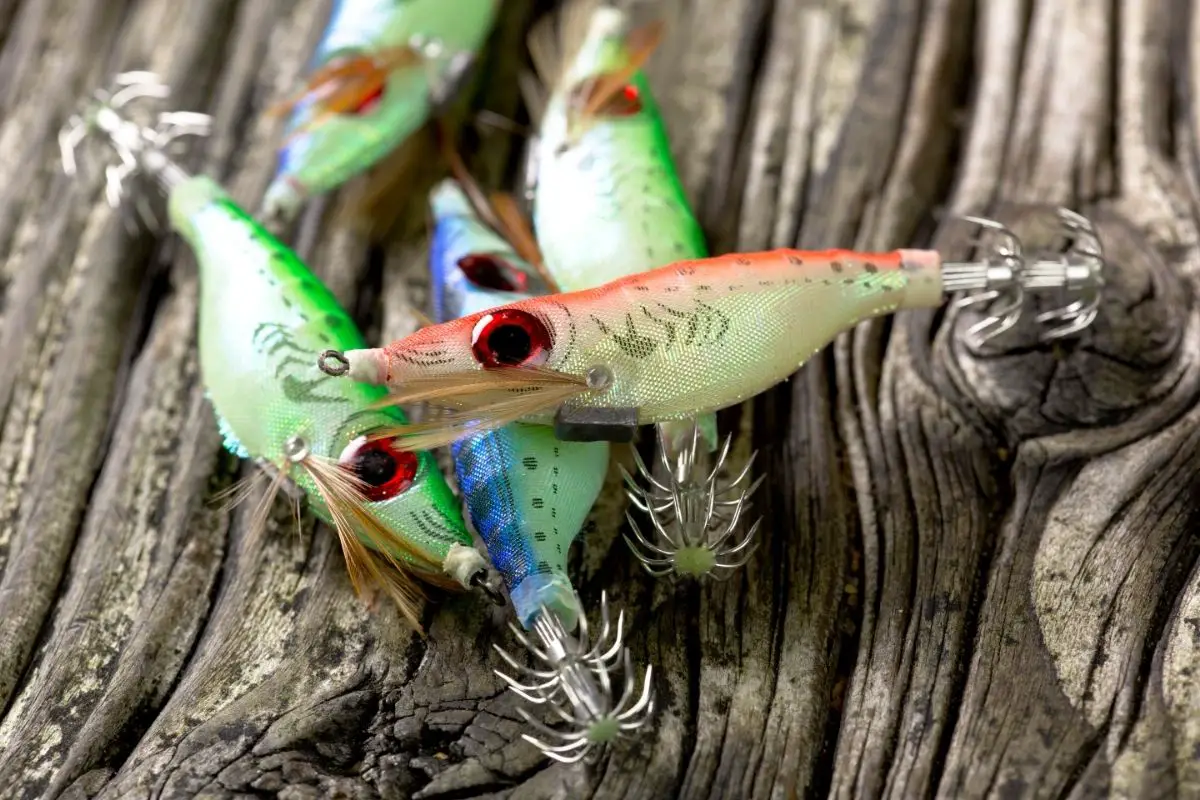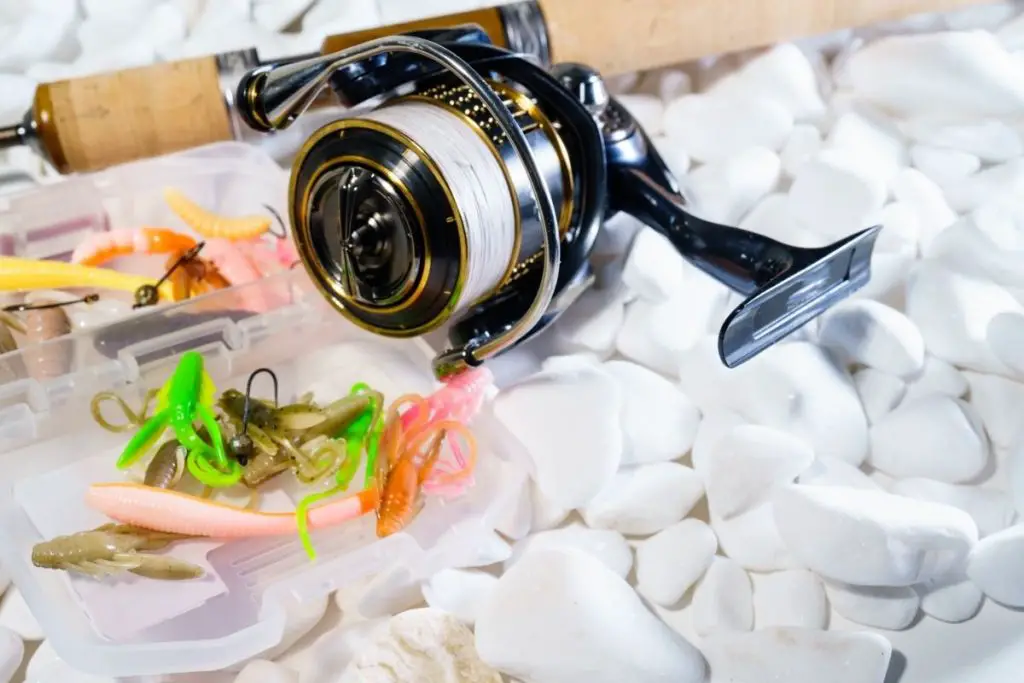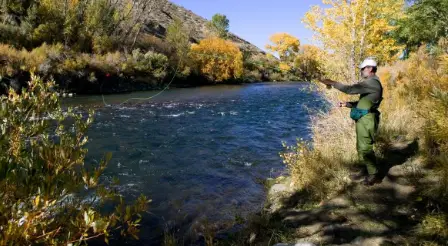Jigs are baits that are designed to imitate live bait such as worms or minnows. Attached to a hook, jig fishing can attract distant game fish, drawn to the lure of what looks like injured bait. They’re particularly popular for catching bass.
The popularity of jigs has grown over the years. In fact, some fishermen claim that jigs are more effective than lures because they attract fish from farther away.
Jig fishing is a fantastic skill to have, as it can help to attract a massive range of fish from many bodies of water. To get your jig fishing technique right, take a look at this guide to the basics.
What Is Jig Casting?
Jigging is an active form of fishing that uses sharp jerks and movements to imitate the appearance of an injured baitfish. Large and predatory fish, such as bass, are drawn to the jig, sometimes from even very far away.
Jigging has been popular with fishers for years, and experienced anglers will often describe jig fishing as their favorite technique. This is because of the variety of large fish that can be caught using a jig and the versatility of the method. Learning to use a jig is an important tool in any fishers’ repertoire.
However, jigging isn’t always easy to get right. And as it’s such an adaptable method, there are variables that need to be accounted for. But with some practice, anyone should be able to fish with a jig.
Jig Casting Basics
Before learning jig fishing, you have to make sure that you have the right tools. A lightweight rod with fast action is essential for the quick movement required with jig casting. A high quality rod and reel can really help with jig fishing, as they allow you to get a feel for the equipment, and to monitor where your jig is in the water.
There are many different types of jigs available, typically consisting of a lead sinker and hook. You can jig either with or without live bait. Below, we’ve covered some of the varieties of jig heads available. Bucktail jigs and vertical jigs are some of the most common options.
With your equipment sorted, it’s time to start jigging. Cast out and let your jig sink and settle at the bottom. Use the first few casts to get a feel for the environment, exploring the ground with your jig and getting used to the depth of it. Stick to clear waters, as the jig needs to be seen. Poor water clarity ruins jig-fishing.
Sink your jig until you feel it hit the bottom. Jerk your wrist and the tip of the rod up, before letting it sink. Repeat, moving the jig up and down, side to side, and all over the place. The aim is to imitate natural movement.
Keep the tension of the line high, and repeat.
Jigging isn’t a technique where you can allow yourself to drift off. It’s important with jigging to stay on the ball, keep up that movement, and stay alert. Otherwise, the fish will lose interest, and your jig won’t attract anything.
Other Jig Fishing Techniques

Tyger Leader is reader-supported and may earn a commission when you book or purchase using our links. Learn more about our affiliate disclaimer here.
Jig casting can be used in multiple situations, but the same bouncing movement won’t always be appropriate. Depending on what you’re trying to lure, and where you’re trying to do it, you may want to try some of these jig fishing techniques, as well as different jig heads.
Vertical Jigs
The vertical jig is long and thin, slicing through the water without the side to side. Vertical jigging is one of the most common methods of jigging, using a bouncing method combined with the natural weight of the rig, to create an erratic dance that lures predators.
Speed Jigging
Speed jigging is an excellent option for catching mid-depth predators such as tuna. Speed jigging typically uses a vertical style jig, but with a quicker jerk that creates a wild movement.
A high-speed reel is essential, as speed rigging relies on minimal rod movement with fast cranking. Speed jigging is an effective technique, but one that requires an impressive amount of concentration.
Bucktail Jigs
There’s one distinctive feature to the bucktail jig, and that’s the hairs. Traditionally made of bucktail hair (which is where the name comes from), these strands are tied to the jig head and move through the water to entice prey.
The bucktail jig is an immensely popular method, as the larger jigs replicate the movement of squid, while the smaller ones appear like shrimp or baitfish. Bucktail jigs need a bounce to get those hairs moving, and they work well in both shallow and deeper water.
Float And Jig
Jig casting is often a pretty involved technique, requiring consistent movement. If you’re after a more relaxing way to use the jig technique in moving waters, then consider the float and jig. This technique involves tying a jig to a float, and letting the waves do the work of creating bounce. The jig should be horizontal in the water, and natural colors work best.
Arkie Head Jigs
Sometimes known as a flipping jig, the Arkie jig is a good all-rounder. It’s stable, with a broad and flat underside. That means you can use an Arkie jig in rocky and weedy conditions. Use a hopping movement with an Arkie jig, and look for bass.
Football Head Jigs
Allow the football jig to sink down, where it creates a dragging movement that attracts bass. The shaping of the football jig gives it a stability that bobs nicely along on rocks. It’s a surprisingly versatile jig, assuming the bass are sticking close to the bottom.
Swim Jigs
Swim jigs have become one of the most popular jig styles because of their versatility. A swim jig has a pointed nose which helps it to cut and slip through the water column, effectively mimicking the movement of fish in the water.
Final Thoughts
The natural movement of jig fishing makes it adaptable to almost any body of water you choose. Jig fishing are great for catching bass in deep water, shallow water, dark water, and even weeds. Just make sure to choose the right jig for where the fish are, and to keep that jig moving.



